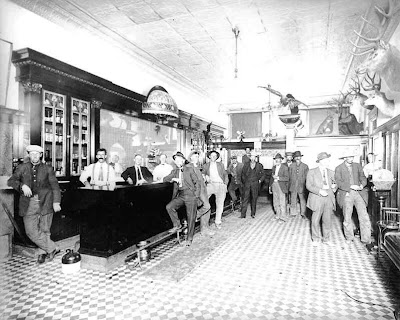
The arrested idols

The Frigidaire graveyard

The ghost door parade

The hits of Spring

My college-age father, George Nelson Bentley, Jr., and his father, George Nelson Bentley
I discovered "Uncle Clyde: A Comedy" while going through my father's innumerable papers and old manuscripts after his death.
A younger George Bentley Sr. and his diminutive brother Clyde
"Uncle Clyde: A Comedy" was to be part of a longer work. The manuscript is marked Chapter 1, and is followed by a fragment of a second chapter. It probably dates from no later than the early Fifties, before Nelson stopped writing prose altogether (he'd produced many stories, essays, critical pieces, and prose poems while in college, and a full-length novel by 1945, in addition to many poems).
Clyde's "Old Dutch Mill"











Castiglione di Fiorentino, 2007





Calumet-Hecla Mine, Michigan
Continuing with excerpts from my great-grandfather David Blumenfeld's diary, which I discovered two years ago.
Travelling salesman
While working in St. Paul, Minnesota, David meets a travelling salesman, who tells him that the “Copper Country” is “a real paradise for tailoring trade to a willing worker.” David decides to rent an upstairs apartment in Calumet, in the Upper Michigan Peninsula, where the Calumet, Hecla, and Tomrak copper mines were then located.
Calumet
But he found [it hard] to make ends meet, as the inhabitants were mostly Italians and Finnish people and very clannish. He found the country overrun with solicitors [peddlers] from the larger cities in every kind of work, soliciting from house to house for the little that was there. Food was very costly, for nothing grew there. Everything had to be shipped in from the Twin Cities [Minneapolis/St. Paul].
Saloon in the mining community of Red Jacket, Calumet
David became disillusioned. The house-to-house begging [for tailoring work] and delivering work, the heavy cold, deep snowdrifts –- all these had put a crimp in his ambition.
Hopkins, Minnesota, 1898
Ever doggedly optimistic, David and Lena decide to check out South St. Paul... Fishing Lodge - Minam, Oregon
Fishing Lodge - Minam, Oregon Lions' Club - Astotin, Washington
Lions' Club - Astotin, Washington Double Your Luck - Winthrop, Washington
Double Your Luck - Winthrop, Washington Crack - Winthrop, Washington
Crack - Winthrop, Washington

Homesteading
Leah took her youngest boy, Joseph, with some of her belongings and went to Oregon to look things over. She was very much disappointed, finding Ben-Zion and his enterprise contrary to her liking. He had a two-room shack, one old horse and wagon, a cow, some chickens and barren soil. These constituted “the farm.” Leah lost heart at the sight of such an outfit and taking the boy she went on to San Francisco, to make her home with her daughter Rose who was working in a hospital.
Telegraph Hill, San Fancisco, 1890s
After Leah departed Ben-Zion was heartbroken and embittered, imagining that his wife lost courage and desire to be with him. He sold out his interest and left for an unknown destination.
Influenza "remedy"
David came home one day from his shop, complaining of a tremulous beating throughout his brain. He said it was as if a small engine were at work in his head and that the piston and boiler were banging, fizzing and vibrating amid his fevered senses. His senses seemed drugged and his mind dimmed. A doctor was called and he ordered David to bed. [David] was in a state of coma for five weeks, hovering between life and death. A trained nurse was engaged to watch over him.
1893 Columbian Exposition
David determined to go to Chicago and moved his family, Lena and their little daughter Belle, then about five years old, and opened a little shop. He did fairly well for a man without capital. In November, Lena gave birth to a boy whom they named Albert.
Washington Ave. between 7th and 8th, 50 years later
...They moved to Second Avenue south, corner of 9th Street, where David opened a dressmaking parlor, but he was handicapped financially in pushing his new enterprise.
Dayton's Bluff, St. Paul 1880
The confusion in David’s mind was sometimes intense. Even when he sat quietly at the table he floundered within himself helplessly, with all the impotent strength of a harpooned whale. “You are a caution, David,” said his friend Abe Calmenson to him one day. “You have the pluck of a lion and the strength of a bull and the pride of the devil to fight misery that is more than I could ever withstand. Oh, you are not beaten yet.”